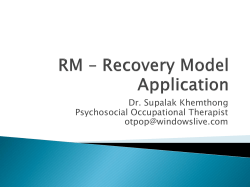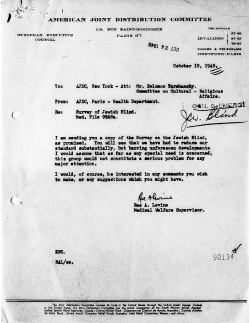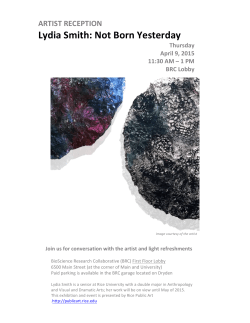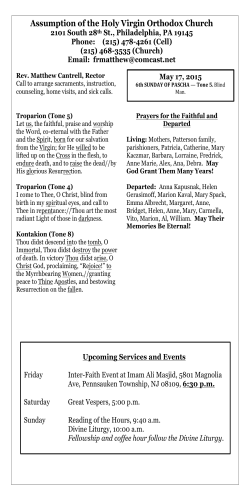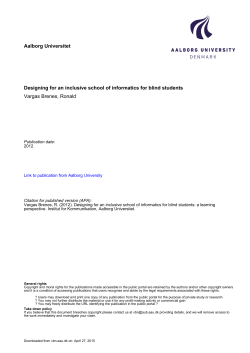
Presentation
Excellence in Vision Rehabilitation …caring for those who served Sally H. Dang, OD VA Long Beach, California Major Soltes Blind Rehabilitation Center Loss of sight is second to loss of life Overview Background of Low Vision Levels of visual impairments What is “low vision?” Vision rehab services in VA/BRC The multidisciplinary team The low vision evaluation Rehabilitation training, inpatient programs Questions Vision Loss… …that cannot be corrected medically, surgically, or by refractive means is considered low vision. “Low Vision” terminology… Low vision: significant reduction of visual function Cannot be fully corrected by ordinary glasses, contact lenses, medical treatment, and/or surgery “Visual Disability” “Visual Function” Functional Vision Loss Not necessarily “Legally Blind” Legal Blindness Definition BCVA of 20/200 or worse in the better seeing eye (Snellen VA chart), BCVA worse than Visual Field is 20 degrees or less in better seeing eye Visual Efficiency (VA+VF), based on percentage non-progressive (20%) vs. progressive (64%) conditions Eye Diseases causing vision loss • • Most common causes: • • • • • Age-related macular degeneration (AMD) Diabetic retinopathy Glaucoma Cataracts Retinitis pigmentosa Normal vision AMD Other common causes: • • • • • Corneal Dystrophy Retinal Detachment Acquired /Traumatic Brain injury Neurological Congenital Diabetic retinopathy Photographs courtesy of National Eye Institute Glaucoma Cataracts Quality of Life Impacts Low vision often results in impairment of daily activities, loss of independence, increased risk of fractures, increased health care expenses, and reduced physical functioning, quality of life, and ultimately life expectancy Vision rehabilitation can enable more independent functioning Low Vision: Prevalence • About 1.3 million • people in the U.S. are legally blind • • Photograph courtesy of Department of Veterans Affairs Each year 75,000 more people in the U.S. will become blind or visually impaired Baby boomers will double the current number of blind or visually impaired in the U.S. over next 30 years Federal and state annual rehabilitation expenditures exceed $250 million Visual Challenges Visual acuity Contrast sensitivity, glare Visual field, blind spots Color discrimination Depth perception Hand-eye coordination Light/photo Sensitivity Low Vision and Blindness Continuum of Care 2008: VA expanded and implemented 3 levels of care: intermediate, advanced and outpatient rehabilitation clinics ( aka VISOR) Range Basic LV services (mandated at every VA) to 6 week inpatient blind rehab training at the BRC’s VA Low Vision Services Basic Low Vision Clinic Intermediate (OD, LVT) Advanced (OD, LVT, O&M) Outpatient Blind Rehab Clinics-”VISOR” (Hoptel, 2 wks prog, OD, LVT, O&M, Computer training, vision rehab therapist) Inpatient Blind Rehabilitation Centers (BRC) 6-8 week program, most depth/full svc Low Vision (Outpatient) Rehabilitation Team Low Vision Optometrist/Ophthalm BROS VIST Coordinator Mobility instructor Low vision therapist Community Agencies Low Vision Evaluation • • • • • • Detailed case history Functional assessment Goal determination Visual acuities Visual field assessment Contrast sensitivity/color vision assessment • • Trial frame refraction Low vision aid/device evaluation • Ocular health exam • Patient education • Plans and referrals Detailed History / Intake Disease, Awareness of eye condition(s) Onset, Chronology of loss, stage of loss Eye/hand dominance Hearing loss Color Vision, contrast Occupation/Hobbies Living arrangement Support network Mobility Stopped driving: ? yrs Activities of Daily Living (ADL’s) Grocery shopping Cooking Cleaning Laundry Grooming Finances Lawn Care/Gardening Walking/driving Ocular Function Assessment Lighting (Indoor/Outdoor) Contrast (Cloudy/Sunny days) Crossing streets Public transportation (bus signs, crosswalks) Previous aids or devices, Hx of glasses, amblyopia/strab (“lazy eye”) Goals (attainable) Low Vision Charts Feinbloom EDTRS Color Vision Test D15-Farthsworth Test Types of color vision defects MARS Contrast Sensitivity Patient Goals Near Goals/Tasks Spotting vs. Continuous Reading Read/send mail Electronic devices Finances/bills/write checks Intermediate tasks: Play cards, gardening, coin/stamp collecting iPad/Computer Distance Goals/Tasks Watching TV (size/dist) Watch live sports event Play sports (golf, shuffle board, ? Ball) Fishing Seeing “faces” at socials Driving ???! Spot reading: Hand-Held Magnifiers Stand Magnifier Sustained Reading: Microscope Floor Lamps, Directed Table Task Lamps CCTV Electronic Magnifier “Reader” More CCTV Devices… Portable Digital Magnifiers OCR Readers…verbal read-back Spotting: Monocular Telescope Distance Device: Telescopes DVI Bioptic Telescopes Opti-Visor/Loupes Tints and Filters Fit-over Filters Types History of Blind Rehab Centers British, St Dunstan- 1915 (WWI) Model of Care-U.S. comparative to U.K. 1st Center 1945 (Hines, Chicago), solo BRC for 17yrs, until post Vietnam War more added regionally strategic 13 Centers in U.S. now Newest BRC in Long Beach, CA with 24beds Maj. Charles Robert Soltes, Jr, O.D. Dept of VA Blind Rehabilitation Center in Long Beach 24 residential inpatient bed facility 24hrs/day nursing care Personal suite per patient, private bath Recreational/Fitness Center Lounge (meals, social, TV) Classrooms/Instruction Blind Rehabilitation Centers Multidisciplinary Team Low Vision OD Low Vision Therapists (Visual Skills) Daily Living Skills Manual Skills Computer Access Training Orientation/Mobility Recreational Therapist Clinical/Medical Team Optometry and Vision Rehab Team Psychology Social Work Dietitian/Nutrition Counseling Nurse Practioner/Medical Staff Nursing Staff (RN, LVN) Audiology *referred as needed Nursing Station Veteran’s Day at Long Beach BRC 0700 Breakfast 0800-1130 Classes/Instruction* 1130-1200 Break 1200-1300 Lunch 1300-1500 Classes/Instruction* *Medical appointments can be anytime during the day, as needed Mobility Training Computer Access Training Visual Skills Training Cooking Class Manual Skills Department Woodshop Home Mechanics Special Projects “Happiness cannot come from without. It must come from within. It is not what we see and touch or that which others do for us that makes us happy; it is that which we think and feel and do, first for the other fellow and then for ourselves.” -Helen Keller “Never tell a patient there is nothing more to be done. Rehabilitation is always an option.” -Hellen Keller “Strengthened by their courage, heartened by their valor, and borne by their memory, let us continue to stand for the ideals for which they lived and died.” -Ronald Reagan Sally H. Dang, OD sally.dang@va.gov
© Copyright 2025

